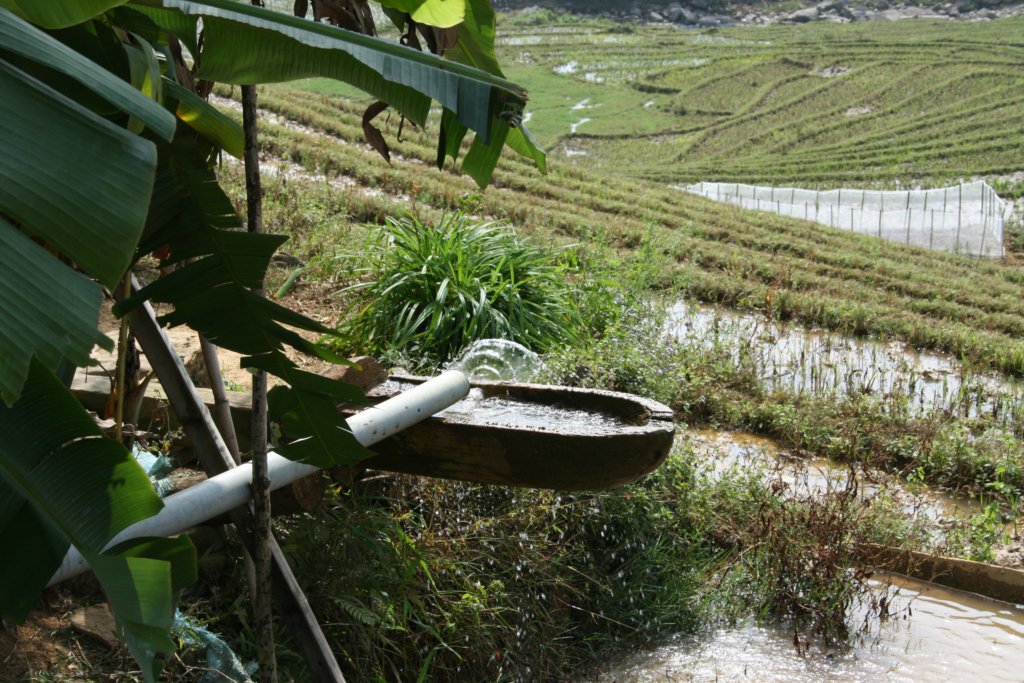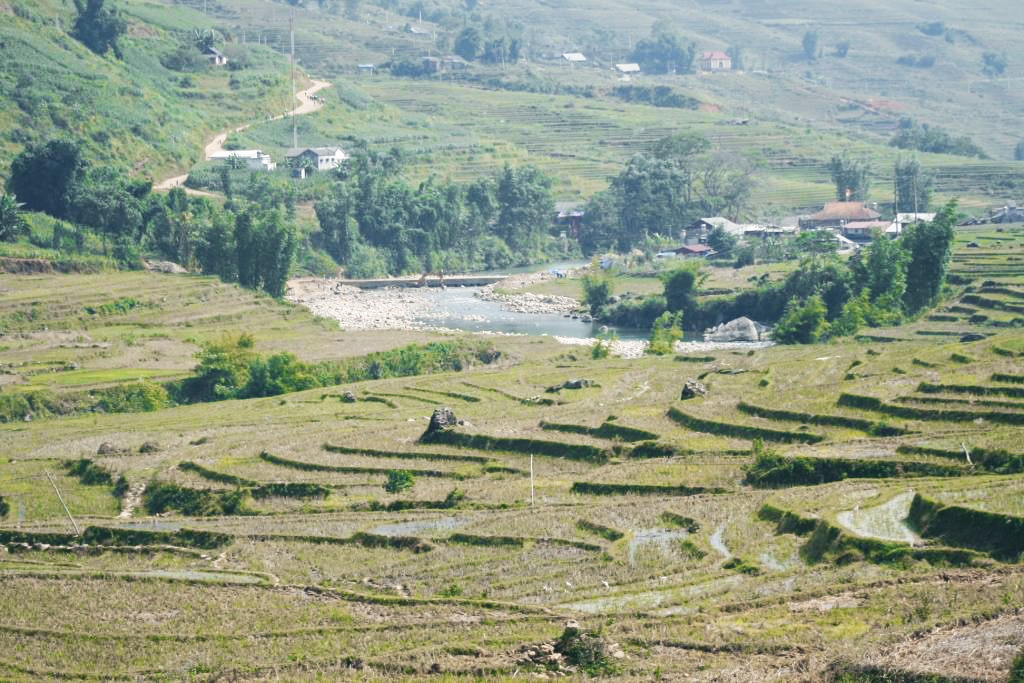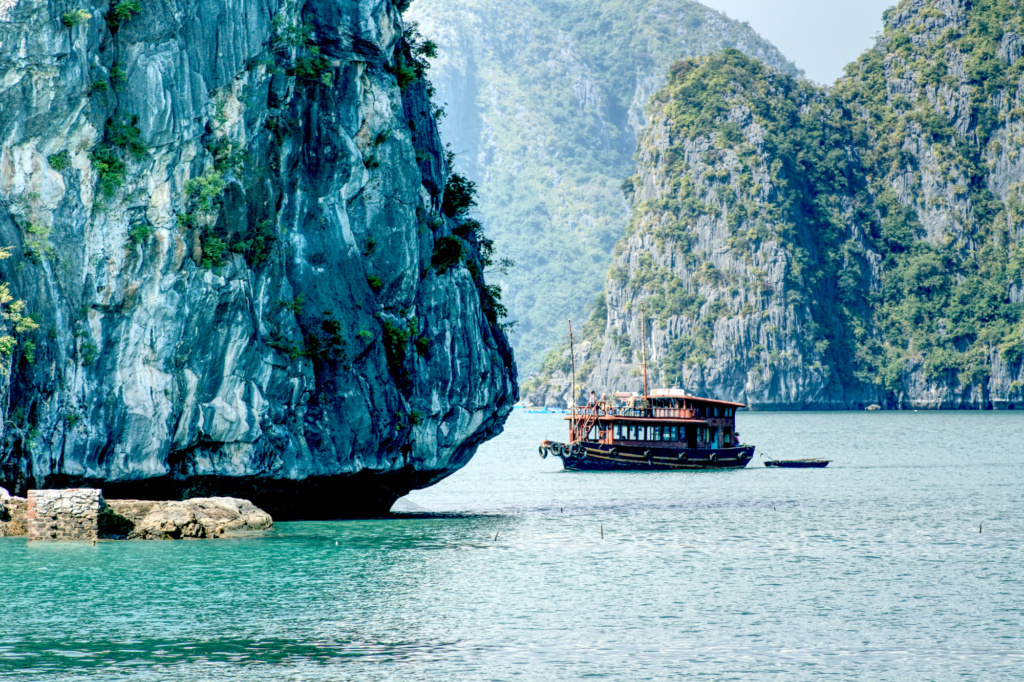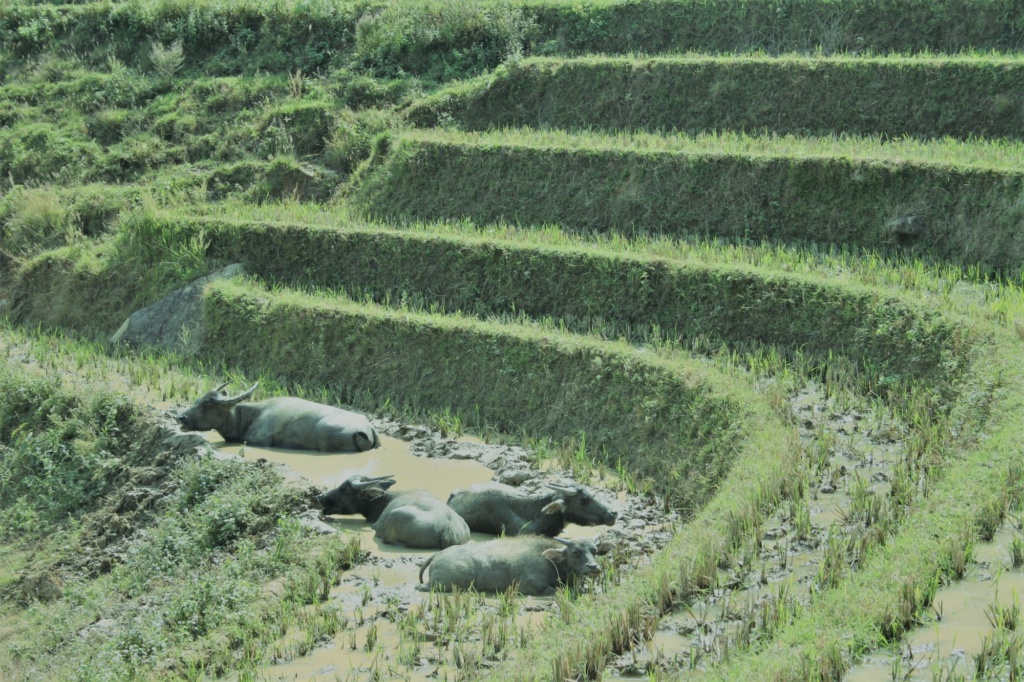Sa Pa Vietnam Travel Guide A Vagabond Life
Nestled amidst the mist-shrouded mountains of northern Vietnam, Sapa beckons travelers with its breathtaking landscapes, rich cultural tapestry, and vibrant hill tribe communities. This scenic hill station, situated near the border with China, offers a serene retreat from the hustle and bustle of urban life, inviting visitors to immerse themselves in the tranquility of its lush valleys and terraced rice fields.
Sapa’s allure lies not only in its natural beauty but also in its cultural diversity. The region is home to several ethnic minority groups, including the Hmong, Dao, and Tay peoples, each with their own distinct traditions, costumes, and languages. Travelers have the opportunity to experience the unique way of life of these communities through homestay programs, trekking excursions to remote villages, and encounters with local artisans.
Additionally, Sapa serves as a gateway to Mount Fansipan, the highest peak in Indochina, offering adventurous souls the chance to embark on challenging treks to its summit. Whether exploring the verdant landscapes, interacting with hill tribe communities, or embarking on mountain adventures, a journey to Sapa promises an unforgettable experience in the heart of Vietnam’s mountainous region.
Sa Pa Vietnam Map
Getting To Sa Pa Vietnam
How to Get to Sapa, Vietnam: A Traveler’s Guide
Sapa, nestled in the picturesque mountains of northern Vietnam, is a destination known for its stunning landscapes, diverse hill tribes, and rich cultural experiences. Getting to Sapa requires navigating through scenic routes and various transportation options, making the journey part of the adventure.
Getting to Sapa from Hanoi
By Train
Traveling by train is one of the most popular and scenic ways to reach Sapa from Hanoi. The journey typically involves taking an overnight train from Hanoi’s Tran Quy Cap station to Lao Cai, the nearest city to Sapa. From Lao Cai, travelers can then take a local bus or taxi for the final 38-kilometer journey to Sapa town, which takes about 1.5 to 2 hours.
Types of Trains: Choose from different types of trains, including regular sleeper trains and luxury options like the Victoria Express, offering comfortable cabins and stunning views of the countryside.
Booking Tips: It’s advisable to book train tickets in advance, especially during peak tourist seasons (from September to November and March to May), as trains can sell out quickly.
By Bus
For those preferring a direct route by road, several bus companies operate daily services between Hanoi and Sapa. Buses depart from My Dinh or Giap Bat bus stations in Hanoi and take approximately 5 to 6 hours to reach Sapa town.
Comfort and Convenience: Buses vary in comfort level, from standard coaches to sleeper buses equipped with reclining seats or beds, offering a budget-friendly option for travelers.
Scenic Views: Enjoy scenic views of rural Vietnam as you travel through mountainous landscapes and charming villages along the way.
Getting to Sapa from Lao Cai
Once in Lao Cai, travelers have several options to complete the journey to Sapa:
Local Bus: Public buses operate regularly between Lao Cai and Sapa, departing from Lao Cai Bus Station. The journey takes approximately 1.5 to 2 hours, winding through mountainous terrain and offering panoramic views of the Hoang Lien Son mountain range.
Taxi: Taxis are readily available at Lao Cai Railway Station and Lao Cai Bus Station, offering a convenient and direct transfer to Sapa town. The journey typically takes about 1.5 to 2 hours, depending on traffic and road conditions.
Conclusion
Getting to Sapa is an adventure in itself, offering travelers the chance to explore Vietnam’s northern landscapes and immerse themselves in local culture. Whether arriving by train, bus, or taxi, the journey to Sapa sets the stage for discovering its scenic beauty, ethnic diversity, and outdoor adventures. Plan your trip to Sapa and embark on an unforgettable journey through Vietnam’s mountainous region, where lush green valleys, terraced rice fields, and welcoming hill tribes await.
Things To See & Do In Sa Pa Vietnam
Discovering the Best Sights in Sapa, Vietnam
Nestled amidst the rugged mountains of northern Vietnam, Sapa is renowned for its breathtaking landscapes, vibrant hill tribes, and rich cultural heritage. Here are some of the must-see sights that make Sapa a captivating destination.
Fansipan Mountain
At 3,143 meters, Fansipan is Indochina’s highest peak and a major draw for outdoor enthusiasts. The trek to the summit offers spectacular views of lush valleys, terraced rice fields, and dense forests. For those seeking a less strenuous option, take the Fansipan cable car, which holds the record for the world’s longest non-stop three-rope cable car.
Muong Hoa Valley
Stretching along the eastern side of Sapa, Muong Hoa Valley is famous for its picturesque terraced rice fields, carved into the hillsides by local ethnic minorities. The valley is dotted with traditional villages of the H’mong, Red Dao, and Giay tribes, offering opportunities to experience their unique cultures and daily life. Don’t miss the chance to visit ancient rock carvings, believed to date back over 3,000 years, which depict scenes of daily activities and spiritual rituals.
Cat Cat Village
Just a short hike from Sapa town lies Cat Cat Village, home to the H’mong people. The village is renowned for its traditional stilt houses, vibrant markets, and handicrafts such as hand-woven fabrics and intricate silver jewelry. Take a leisurely stroll along scenic trails lined with cascading waterfalls and lush vegetation, immersing yourself in the tranquility of rural Vietnam.
Ta Phin Village
Venture further into the countryside to discover Ta Phin Village, inhabited primarily by the Red Dao ethnic group known for their distinctive attire and herbal medicine expertise. Wander through the village’s narrow paths flanked by terraced fields and visit local homes to witness traditional weaving techniques and participate in cultural exchanges. The Red Dao are known for their hospitality, so don’t be surprised if you’re invited to share a meal or enjoy a cup of herbal tea with the villagers.
Bac Ha Market
For a vibrant cultural experience, visit Bac Ha Market, one of the largest and most colorful markets in the region. Held every Sunday, the market attracts ethnic minorities from surrounding villages who gather to trade goods, livestock, and handicrafts. Explore stalls brimming with traditional attire, handmade textiles, and local produce, and soak up the lively atmosphere enhanced by the sounds of traditional music and the aroma of local delicacies.
Silver Waterfall (Thac Bac)
Located just a short drive from Sapa town, Silver Waterfall is a majestic cascade plunging down from the Hoang Lien Son mountain range. The waterfall is surrounded by lush greenery and offers panoramic views of the surrounding valleys and terraced fields. Visit during the rainy season for a more impressive flow, and enjoy the cool mist and serene ambiance that make it a favorite spot for nature lovers and photographers.
Ham Rong Mountain
Embark on a scenic hike up Ham Rong Mountain for panoramic views of Sapa town and the Hoang Lien Son range. The mountain is known for its diverse flora, including orchids, azaleas, and ancient trees. Explore winding stone paths that lead to scenic viewpoints, garden landscapes, and mythical rock formations. Ham Rong Mountain also hosts cultural performances showcasing traditional music and dance, providing insight into the local ethnic cultures.
Love Waterfall (Thac Tinh Yeu)
Located in the lush jungle of Hoang Lien National Park, Love Waterfall is named for its romantic legend and is a popular destination for nature enthusiasts. Follow a scenic trail through bamboo forests and crystal-clear streams to reach the waterfall, which cascades down from a height of over 100 meters. Enjoy the tranquil surroundings and cool mountain air, making it an ideal spot for relaxation and photography.
Hoang Lien National Park
Explore the biodiversity of Hoang Lien National Park, home to diverse ecosystems, rare wildlife species, and endemic flora. The park encompasses Fansipan Mountain and several other peaks, offering opportunities for trekking, birdwatching, and discovering medicinal plants used by local communities. Experience the pristine beauty of Vietnam’s northern highlands and immerse yourself in the natural wonders that define Sapa’s unique landscape.
Sapa Ancient Rock Field
Discover the mysterious Sapa Ancient Rock Field, an archaeological site featuring large boulders engraved with intricate patterns and symbols. Believed to have been created by ancient inhabitants over 2,500 years ago, the rock field offers a glimpse into Vietnam’s prehistoric era and serves as an important cultural and historical landmark in Sapa.
Conclusion
Sapa’s stunning landscapes, cultural diversity, and rich heritage make it a must-visit destination for travelers seeking an authentic Vietnamese experience. Whether you’re trekking through terraced rice fields, exploring traditional villages, or marveling at majestic waterfalls, Sapa promises an unforgettable journey through northern Vietnam’s natural and cultural wonders. Embrace the beauty and charm of Sapa and create lasting memories amidst its serene mountain landscapes and vibrant ethnic cultures.
Trekking In Sa Pa Vietnam
The Ultimate Guide to Sapa: Exploring Homestays and Trekking Adventures
Nestled in the breathtaking mountains of northern Vietnam, Sapa offers a gateway to stunning landscapes, vibrant hill tribe cultures, and unforgettable trekking experiences. Discover the essence of Sapa with our comprehensive guide to homestays and trekking adventures.
Discovering Sapa: An Introduction
Sapa, located in the Lao Cai province near the border with China, is renowned for its terraced rice fields, misty mountains, and diverse ethnic minority communities. Travelers flock here for its cooler climate, lush scenery, and opportunities to immerse themselves in traditional village life.
Homestays in Sapa
Experience authentic hospitality by staying in a local homestay, where you’ll live with ethnic minority families such as the H’mong, Red Dao, and Tay. Homestays offer a unique opportunity to learn about indigenous cultures, participate in daily activities like farming and cooking, and gain insights into traditional customs and rituals.
Choosing a Homestay: Select from various homestay options in Sapa town and surrounding villages like Ta Van, Cat Cat, and Y Linh Ho. Each village offers distinct cultural experiences and stunning natural surroundings.
What to Expect: Accommodations range from simple wooden houses to more comfortable lodgings with basic amenities. Meals are often prepared using fresh local ingredients, showcasing the region’s culinary traditions.
Trekking Adventures in Sapa
Explore Sapa’s rugged terrain and panoramic vistas through exhilarating trekking routes that cater to all levels of fitness and experience. Whether you’re a novice or seasoned trekker, Sapa’s trails offer something for everyone.
Popular Trekking Routes:
- Fansipan Mountain: Conquer Indochina’s highest peak on a multi-day trekking expedition, passing through dense forests, alpine meadows, and awe-inspiring viewpoints.
- Muong Hoa Valley: Wander through terraced rice fields and picturesque villages inhabited by ethnic minorities. Discover ancient rock carvings and encounter local farmers tending to their crops.
- Ban Ho Village: Trek to this remote village surrounded by lush forests and cascading waterfalls. Experience the warmth of Red Dao hospitality and unwind in natural hot springs.
Guided Tours: Opt for guided trekking tours led by experienced local guides who offer insights into the region’s flora, fauna, and cultural heritage. Guides also facilitate interactions with villagers and ensure your safety on the trails.
Practical Tips for Visiting Sapa
- Best Time to Visit: Plan your trip during the dry season from September to November or March to May for pleasant weather and clear views.
- Packing Essentials: Pack sturdy hiking boots, lightweight clothing for layering, rain gear, insect repellent, and a comfortable backpack for day trips.
- Respect Local Customs: Embrace cultural sensitivity by dressing modestly and asking for permission before taking photographs, especially in villages.
Conclusion
Visiting Sapa promises an enriching journey into Vietnam’s remote and stunning landscapes, where homestays and trekking adventures offer unparalleled insights into indigenous cultures and natural beauty. Whether you seek tranquility amidst terraced rice fields or adventure along challenging mountain trails, Sapa captivates with its charm and authenticity. Embark on the ultimate Sapa experience and create lasting memories in this serene mountain retreat.





